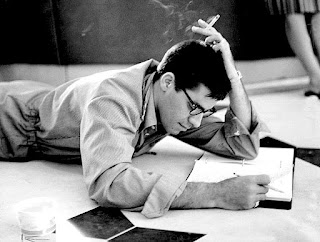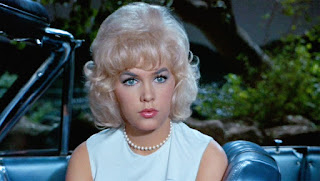“No man, for any considerable period, may wear one face to himself and another to the multitude, without finally getting bewildered as to which may be the true.” —Nathaniel Hawthorne
“Mr. Robot” has been renewed for Season 4, USA Network announced Wednesday. The series stars Rami Malek and Christian Slater. It follows Elliot Alderson (Malek), a cyber-security engineer who became involved in the underground hacker group fsociety after being recruited by their mysterious leader Mr. Robot (Slater), whom he later discovered to be the projection of his dead father. Following the events of fsociety’s five/nine hack on the multi-national E Corp, the series explores the consequences of the attack, the motivations of those involved and the disintegration between Elliot and Mr. Robot. The series also stars Portia Doubleday, Carly Chaikin, Martin Wallström, Grace Gummer, Michael Cristofer, Bobby Cannavale and BD Wong.
Christian Slater recently received his third consecutive Golden Globe nomination for Best Performance by an Actor in a Supporting Role in a Series, Limited Series or Motion Picture Made for Television, an award which he won in 2016. Malek has been nominated for two Golden Globes for Best Performance by an Actor in a Television Series, Drama. He also won the Emmy in 2016 for Outstanding Lead Actor in a Drama Series. Source: variety.com
Fsociety’s revolution, Elliot’s hacks... all of it was a thrilling and emotionally cathartic response to a world that seemed immune to any efforts to improve it. We’re at the mercy of forces far beyond our control, to the point that we’re often scorned even for attempts to imagine transforming it, by people who have so fully made peace with rapacious capitalist structures and ideologies that to challenge such a system is, to them, pathetic—miserably inadequate. The show seemed like a tonic to our need to act. But now, at the close of its third season, it has revealed a secret: Action isn’t always what’s needed. Sometimes, acceptance of what has come before is more revolutionary than all the hacks in the world.
Everyone lives with the contradictions within ourselves, and when we do something wrong—when we give birth to that regret—it’s up to us not only to make it right, but to make peace with ourselves for the wrong we’ve done, and grow from the experience. No one encounters this problem more starkly than Angela. She’s forced to acknowledge the damage is done; those people who died in the 71 attacks aren’t coming back, any more than her mother can. Whiterose manipulated her into doing exactly what was needed, and the deaths were little more than a vendetta against the man who turned out to be her father. (Yes, there’s still the possibility Whiterose’s plan is real, but none of that negates the fact nobody needed to die.) It brings Angela crashing back into reality, and the one man who has played the role of Machiavellian villain this whole time ends up being the one to give her the best, and most honest, advice: “Find a way to live with what you did.”
Our memories are faulty—Elliot’s more so than most, but not by a lot—and so one of the defining moments of his life is revealed to be fool’s gold, a phony narrative that gave his life meaning and drove him to anger and resentment. The story that his father pushed him out the window pushed him forward, but it also pushed him away from who he was, and likely contributed to the fractured psyche with which he’s been at war. Because Mr Robot came to him in the image of his dead father, and that father stood in for the symbolic betrayal of the world against Elliot. He couldn’t have worked with Mr Robot even if their goals were identical. But now that he’s learned the truth, it opens the door for a harmony that couldn’t exist before. Why? Because Elliot found a way to live with what he did.
And it was Darlene who gave him that truth, and allowed him to move forward. “I’m here to remember for you,” she says, and that statement could be a motif for their relationship. Elliot inspired her to act, but she inspired him to deal with his past. In season one, it was her shocked realization that he had forgotten who she was that triggered his first confrontation with himself. She pushed him to look into the mirror and see his true life, not the one he had papered over. Darlene keeps him tethered to reality, and more than that, to human connection. Earlier, he had blamed her for his condition, and she planned to leave rather than deal with the consequences of their actions since the hack. But instead, the siblings found a way to live with each other in a new place: trust, and forgiveness for the past.
Mr. Robot is a grand, messy, passionate plea for placing our trust and care in the people we love, and most of all, finding that love in ourselves when it feels like the world has beaten it out of us. It’s not a particularly hip sentiment, but genuine emotion rarely is. Yes, there’s a mission to come. Yes, Elliot’s right: The one percent of the one percent revealed themselves, and now, he’s going to make them pay. That will be thrilling, and it will be complex. And we’ll still have lots of symbols and portentous allusions and paused screens to study and debate. And yes, we’ll still have regrets, right alongside the characters (of which let’s never forget, we are one). But we’ll also have genuine human connection, embodied in every time Elliot asks us if we’re seeing it, too. And that’s the only real reason to keep coming back. Source: www.avclub.com
The third act of this episode is one of the most touching because it shows Mr. Robot and Elliot coming to a middle ground and realizing that they need to work together in order for both of them to be at their best. They both have elements of one another in them and as a result, can accomplish anything they set their mind upon. They have a great conversation with each other on the subway platform both being fully vulnerable to one another and Elliot reveals that his next move, after reversing the 5/9 hacks, is that he is planning on going after those who play God without permission and bring them all down. When Irving walks away from everything—possibly to Barbados, who knows?—his sense of justified fury is palpable. “Remember, dollface,” he tells Grant, gripping Whiterose’s latest boytoy by the chin, “I was you years ago.” What’s left of him now isn’t much. Perhaps Grant took that into consideration when he splattered his own brains all over the barn.
By now, it’s been reported that Mr. Robot is renewed for a fourth season which is reason for excitement because while this finale was a great ending to the 5/9 hacks, Stage 2 and more it also allowed for Elliot and Mr. Robot to stop fighting one another and come together and form a powerful team working towards a common goal rather than be pawns used by a shadowy omnipotent Army. I hope that Mr. Robot’s fourth season can follow and build upon the exciting storytelling they’ve managed to create in its third season. This season has been a wild ride and has marked a return to greatness for a show that seemed to slightly lose its way in the second season, but all of that doubt is washed away after this incredible run of episodes. Source: keithlovesmovies.com
—Deadline Hollywood: Elliot’s decision to reverse the 5/9 hack: Is this just a means to ease his own guilt after blowing up all those E-corp buildings? —Sam Esmail: Yeah, I think that with the journey of Elliot, we started the series with this guy in an immense amount of pain. Instead of facing that, he blamed it on society and externalized to the world around him what needed to be fixed. That’s what this moment in this season was about: His realization that what he wanted was not co-opted by the very people he was trying to take down; that it was wrong. There are a few internal struggles he also faces in regards to his relationship with Mr. Robot and its evolution.
—Deadline Hollywood: Elliot’s decision to reverse the 5/9 hack: Is this just a means to ease his own guilt after blowing up all those E-corp buildings? —Sam Esmail: Yeah, I think that with the journey of Elliot, we started the series with this guy in an immense amount of pain. Instead of facing that, he blamed it on society and externalized to the world around him what needed to be fixed. That’s what this moment in this season was about: His realization that what he wanted was not co-opted by the very people he was trying to take down; that it was wrong. There are a few internal struggles he also faces in regards to his relationship with Mr. Robot and its evolution.
HBO Films is developing Think Aaron, based on the tragic story of “hacktivist” Aaron Swartz, from Robert De Niro and Jane Rosenthal’s Tribeca Productions, husband-and-wife producing duo Eric Roth and Debra Greenfield, writer Andy Bellin and director Elliott Lester. In Think Aaron, child prodigy and programming genius Swartz becomes his generation’s most important and influential “hacktivist,” a political activist using his expertise in technology to fight for open and equal access to knowledge on the Internet, only to find himself imprisoned and made an example of by the U.S. government. The subject is very timely given the ongoing net neutrality debate. Swartz was the founder of Demand Progress, which launched the campaign against the Internet censorship bills (SOPA/PIPA). He also was involved in the development of the web feed format RSS; the Markdown publishing format. He also developed website theinfo.org and authored the landmark analysis of Wikipedia, Who Writes Wikipedia?
In 2011, Swartz was arrested by MIT police on state breaking-and-entering charges for allegedly connecting a computer to the MIT network and setting it to download academic journal articles from digital library JSTOR using a guest user account issued to him by MIT. He later was charged with wire fraud and violating the Computer Fraud and Abuse Act, carrying a maximum penalty of $1 million in fines and 35 years in prison. He committed suicide in 2013 at age of 26 while under federal indictment for his alleged computer crimes. Earlier, Swartz was the subject of an acclaimed 2014 documentary, “The Internet’s Own Boy: The Story of Aaron Swartz.” Think Aaron reteams Tribeca Productions and HBO following their collaboration on the 2017 Emmy-nominated The Wizard of Lies, starring De Niro, which was the most watched HBO movie in 4 years, since 2013’s Behind the Candelabra. Source: deadline.com

































































